Tailwater Recovery and On-Farm Storage Reservoir: Water Savings
Why Save Water Using TWR Systems?
Row-crop irrigation is the primary use of groundwater in the Mississippi Delta region. Currently, withdrawals of water from the aquifer by irrigators is greater than the amount that is recharged (YMD, 2010). Figure 1 shows the Mississippi Delta region and magnitude of aquifer levels above mean sea level. The groundwater levels range from more groundwater (blue and light blue) to less groundwater (red and orange). Water levels in the aquifer under Sunflower and Leflore Counties are denoted with red because agricultural withdrawal is much greater than recharge. The annual groundwater deficit is estimated to be approximately 150,750 acre-feet (YMD, 2010; Barlow and Clark, 2011).
Several options are available for irrigators to reduce groundwater use. First, they can improve the efficiency of their water use, also known as “at-the-tap conservation” or “more crop per drop.” They can achieve this by using technologies including soil-moisture meters, center-pivot irrigation with drop lines and improved nozzles, or furrow irrigation with pipe planner programs with variable-hole-size selection and surge valves. Second, irrigators can use surface water. This can be done by installing a pump on an existing surface water source or by installing a tailwater recovery (TWR) system.

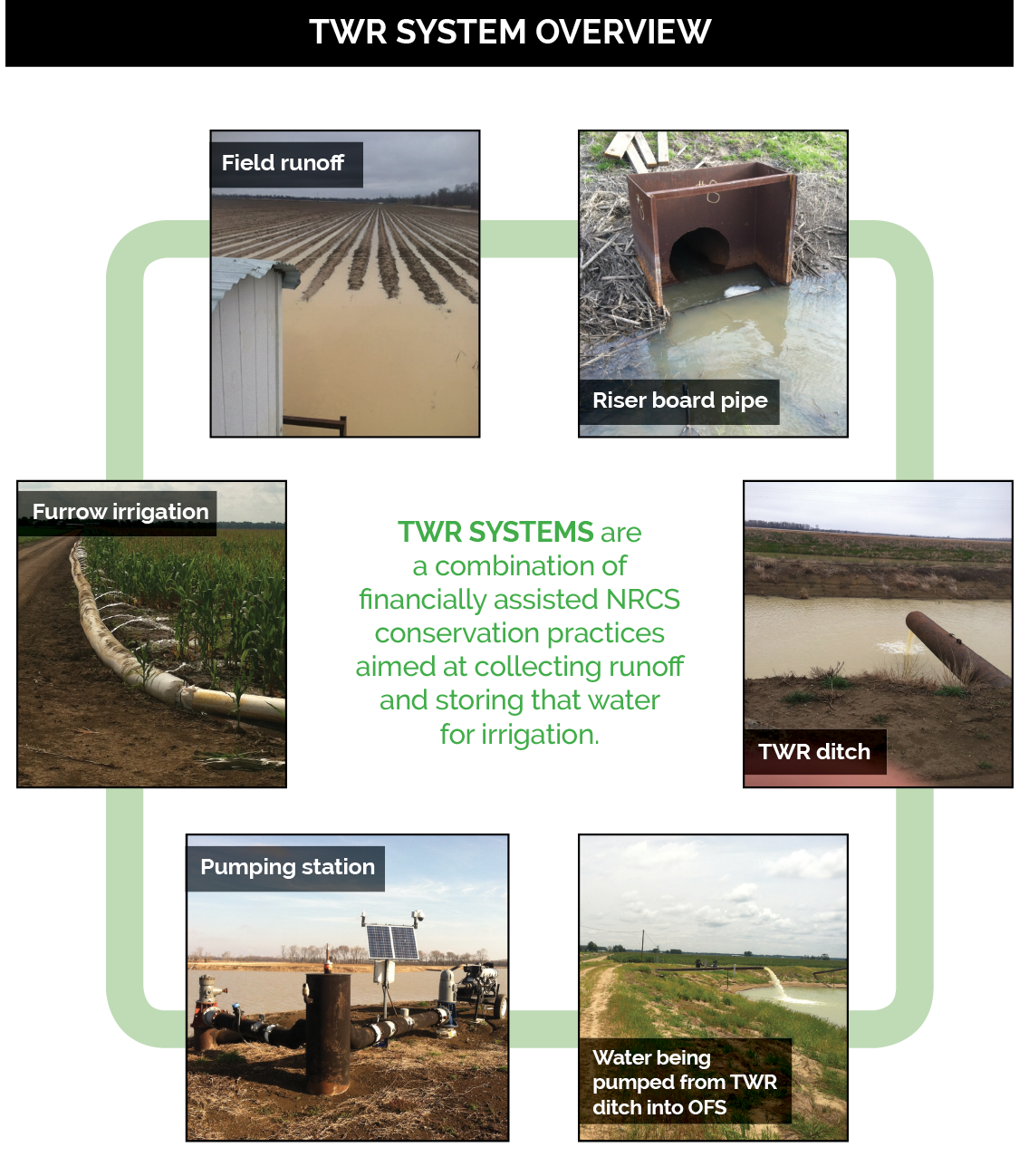
Tailwater recovery (TWR) systems store water on the landscape to provide an alternative irrigation source for producers. Water used by irrigators from tailwater recovery systems directly offsets the amount of groundwater withdrawn from the aquifer. Thus, TWR systems are a popular conservation practice in the Mississippi Delta region. It is important to document how much water is saved and lost using TWR systems.

TWR System Water Monitoring Results
Water Budgets
Irrigators can use surface water from TWR systems as an alternative to groundwater. Data from eight locations in the Mississippi Delta region indicate that TWR systems 1) store surface water from October through May; 2) supply irrigators with water from June through July; and 3) lose considerable water to evaporation from August through September.
TWR System Water Budget Results
Currently installed TWR systems have the capacity to offset aquifer depletion by 23,301 acre-feet a year by providing irrigators with an alternative to groundwater. Assuming each of the current TWR systems is installed on an individual farm, 2 percent of the farms in the Mississippi Delta region would reduce the groundwater deficit by 15 percent.

For More Information
Consult your county USDA Natural Resources Conservation Service agent for more details on conservation practices.
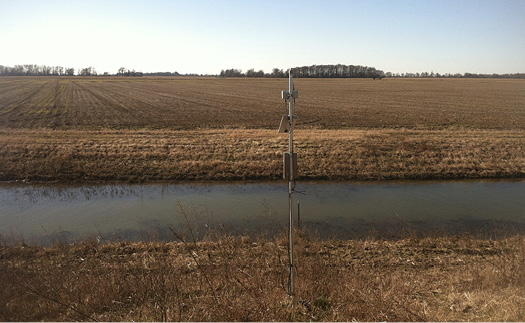
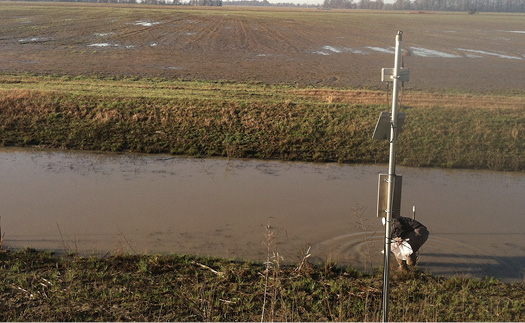
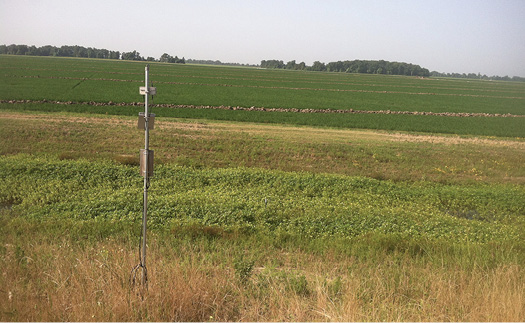
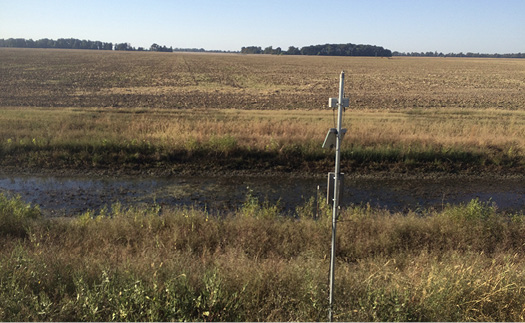
References
Omer, A. R., Dyer, J., Prince Czarnecki, J. M., Kroger, R., & Allen, P. J. (2017). Development of water budget for tailwater recovery systems in the Lower Mississippi Alluvial Valley. Journal of Irrigation and Drainage Engineering 144(6). https://doi.org/10.1061/(ASCE)IR.1943-4774.0001302
Barlow, J. R., & Clark, B. R. (2011). Simulation of water-use conservation scenarios for the Mississippi Delta using an existing regional groundwater flow model. Reston, VA: U.S. Department of the Interior, U.S. Geological Survey.
YMD (Yazoo Mississippi Delta Joint Water Management District). (2010). Estimated 2010 groundwater use from the Mississippi River Valley Alluvial Aquifer. Stoneville, MS: YMD.
The information given here is for educational purposes only. References to commercial products, trade names, or suppliers are made with the understanding that no endorsement is implied and that no discrimination against other products or suppliers is intended.
Publication 3272 (POD-05-23)
By Austin Omer, PhD, former Extension Associate, and Beth Baker, PhD, Associate Extension Professor, Wildlife, Fisheries, and Aquaculture.
The Mississippi State University Extension Service is working to ensure all web content is accessible to all users. If you need assistance accessing any of our content, please email the webteam or call 662-325-2262.


